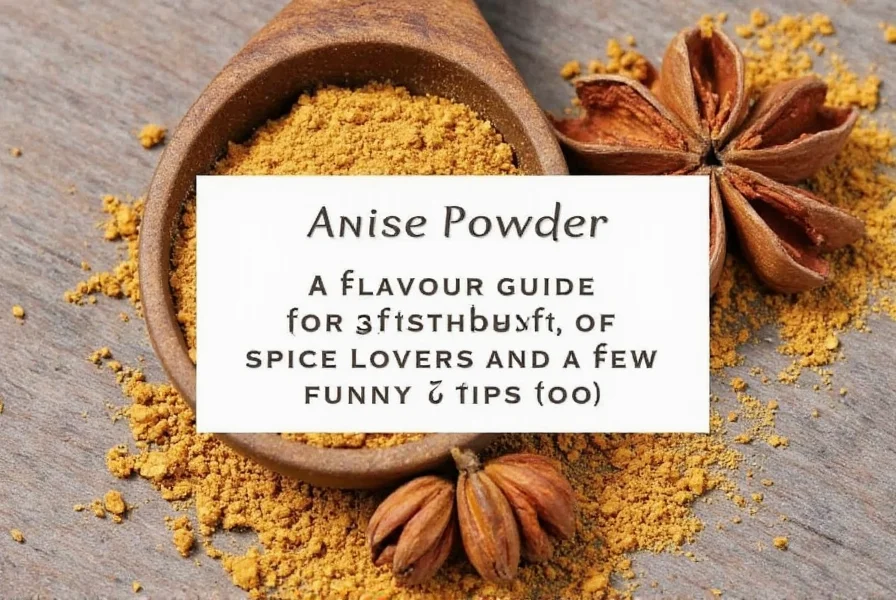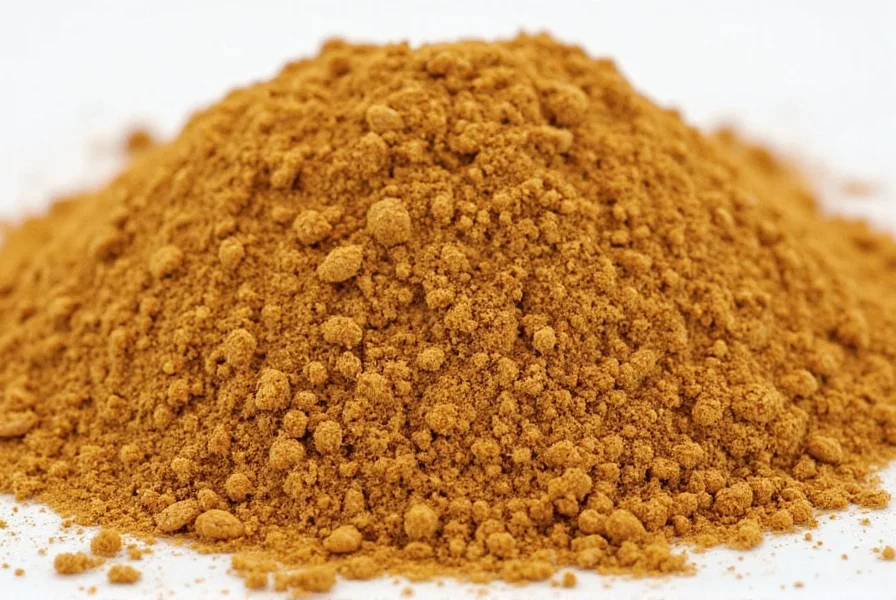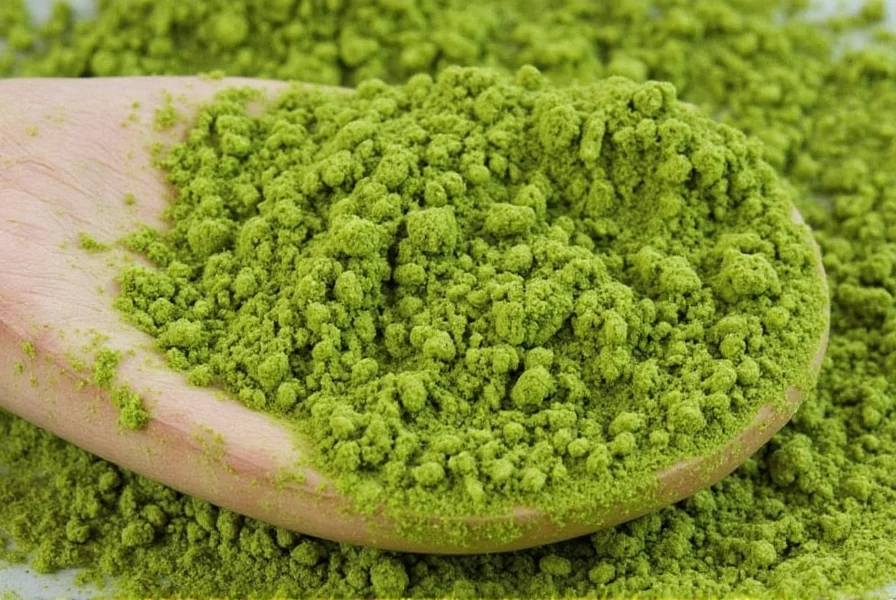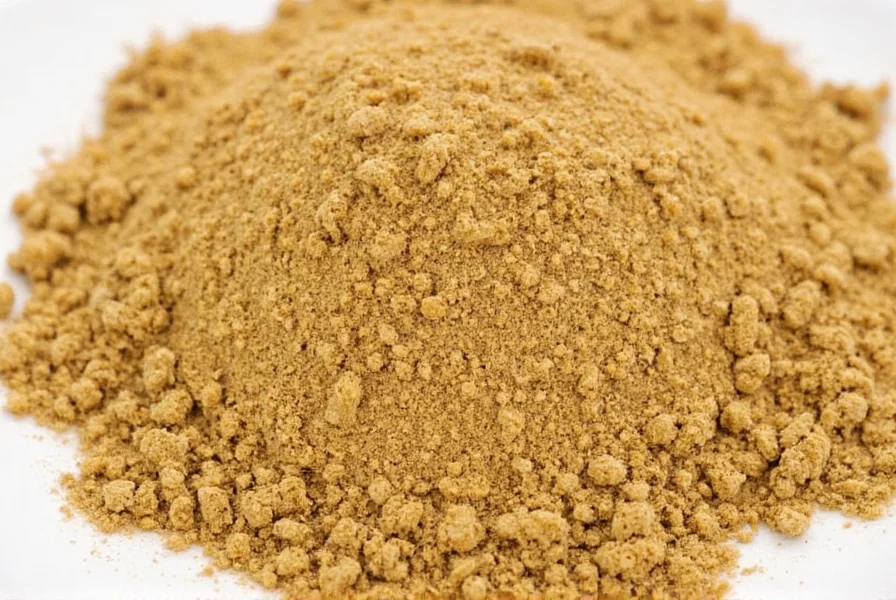Table of Contents
How to Use Anise Powder
Anise powder is a versatile spice that enhances both sweet and savory dishes. Here's how to use it effectively:
- Baking: Add 1/4 teaspoon per cup of flour to sugar cookies for a subtle licorice note, or mix 1/2 teaspoon into cinnamon roll filling for aromatic depth. For biscotti, combine 1/2 teaspoon with almonds and orange zest for traditional Italian flavor.
- Savory Dishes: Sprinkle 1/2 teaspoon into Mediterranean fish stews or use 1 teaspoon in Middle Eastern lamb tagines. For braised pork, add 1/2 teaspoon to the braising liquid for complexity.
- Beverages: Stir 1/8 teaspoon into hot chocolate for a winter treat, or add to mulled wine with cloves and cinnamon. For coffee, try 1/8 teaspoon in your grounds before brewing.
- Spice Blends: Make your own garam masala by combining 1 teaspoon anise powder with 2 teaspoons cumin, 1 teaspoon coriander, and 1/2 teaspoon cardamom.
Always start with small amounts - anise powder is potent and its flavor intensifies during cooking.
Flavor Profile and Uses
Anise powder has a distinct sweet, licorice-like aroma with subtle floral notes. Unlike star anise, it's sweeter and more delicate, making it perfect for both sweet and savory applications. Its flavor profile works best when paired with complementary spices like cinnamon, cardamom, and nutmeg.

Cooking Tips with Anise Powder
- Measurement Guide: For baking: 1/4 tsp per cup of flour; for savory dishes: 1/2 tsp per pound of meat; for beverages: 1/8 tsp per serving.
- Pairing Examples: - With cinnamon: Perfect for apple pie filling or snickerdoodles - With cardamom: Enhances chai tea and Indian desserts - With nutmeg: Ideal for pumpkin bread and custards
- Toast for Better Flavor: Lightly toast the powder in a dry pan for 30 seconds before using to release its essential oils and intensify aroma.
- Storage Best Practices: Keep in an airtight glass jar away from heat and light. For maximum freshness, store in the refrigerator for up to 12 months.

Buying Guide for Anise Powder
When purchasing anise powder, prioritize freshness and quality:
| Product Name | Features | Best For | Price Range |
|---|---|---|---|
| Indian Anise Powder (Organic) | 100% pure, organic, and ground from fresh seeds | Baking, desserts, and traditional Indian recipes | $8–$12 |
| Middle Eastern Anise Ground | Strong aroma, ideal for savory dishes and spice blends | Soups, stews, and meat dishes | $6–$10 |
| European Anise Powder | Lighter flavor, great for baking and beverages | Cookies, cakes, and herbal teas | $5–$9 |
Comparison Table: Anise Powder vs. Similar Spices
| Spice | Flavor | Common Uses | Similarity to Anise Powder |
|---|---|---|---|
| Star Anise | Strong, licorice-like | Asian cuisine, broths, and sauces | Very similar in flavor, but coarser and used whole |
| Fennel Seeds | Mild, sweet, and slightly anise-like | Bread, sausage, and vegetable dishes | Less intense than anise powder, more versatile |
| Cardamom | Warm, floral, and slightly sweet | Baked goods, coffee, and desserts | Complements anise but has a different profile |
| Cinnamon | Sweet, woody, and warm | Baking, drinks, and savory dishes | Works well with anise in sweet recipes |

Fun Facts About Anise Powder
- Medieval Medicine: In the Middle Ages, anise was believed to help with digestion and was used to treat ailments like coughs and colds.
- Lovely for Pets: Some pet owners use anise powder to help reduce gas and bloating in their dogs—though always consult a vet first!
- Ancient Egypt: Anise was used in ancient Egypt as a natural remedy and even found in tombs, showing its importance in daily life.
- It's Not All About Licorice: Although it tastes like licorice, anise isn't related to the plant used for licorice root. They just share a similar flavor profile.
Frequently Asked Questions
What's the difference between anise powder and star anise?
While both have a similar licorice-like flavor, they come from completely different plants. Anise powder is made from the seeds of the Pimpinella anisum plant (related to parsley and fennel), while star anise comes from the fruit of an evergreen tree native to China. Star anise has a stronger, more pungent flavor and is typically used whole in cooking, whereas anise powder is made from ground seeds and has a sweeter, more delicate flavor profile.
How much anise powder should I use in recipes?
Anise powder is very potent, so a little goes a long way. For baking: 1/4 teaspoon per cup of flour. For savory dishes: 1/2 teaspoon per pound of meat. For beverages: 1/8 teaspoon per serving. Always start with less and adjust to taste.
How should I store anise powder to maintain freshness?
Store in an airtight glass container away from light, heat, and moisture. Refrigeration extends shelf life to 12 months. Avoid plastic containers which can absorb odors.
Can I substitute fennel for anise powder in recipes?
Yes, but with adjustments. Use 1.5x more fennel seeds (ground) for equivalent flavor. For baking, combine 3/4 teaspoon fennel with 1/4 teaspoon star anise for closer flavor match.
Is anise powder safe for everyone to consume?
Generally safe in culinary amounts. Pregnant women should limit to 1/2 teaspoon daily. Those with celery or carrot allergies should avoid. Consult your doctor if taking blood thinners or hormone medications.
What are the best dishes to showcase anise powder's flavor?
Try it in:
- Sweet: Biscotti with almonds, cinnamon apple pie, snickerdoodles
- Savory: Mediterranean fish stew, lamb tagine, braised pork shoulder
- Beverages: Mulled wine, spiced hot chocolate, chai tea
Conclusion
Anise powder transforms ordinary dishes into extraordinary culinary experiences when used correctly. With precise measurements, proper pairing, and fresh storage, this versatile spice can elevate everything from holiday cookies to Middle Eastern stews.

Start with small amounts, experiment with pairings, and discover how anise powder can become your secret ingredient for delicious, aromatic creations. Your kitchen will thank you for the flavor boost!











 浙公网安备
33010002000092号
浙公网安备
33010002000092号 浙B2-20120091-4
浙B2-20120091-4